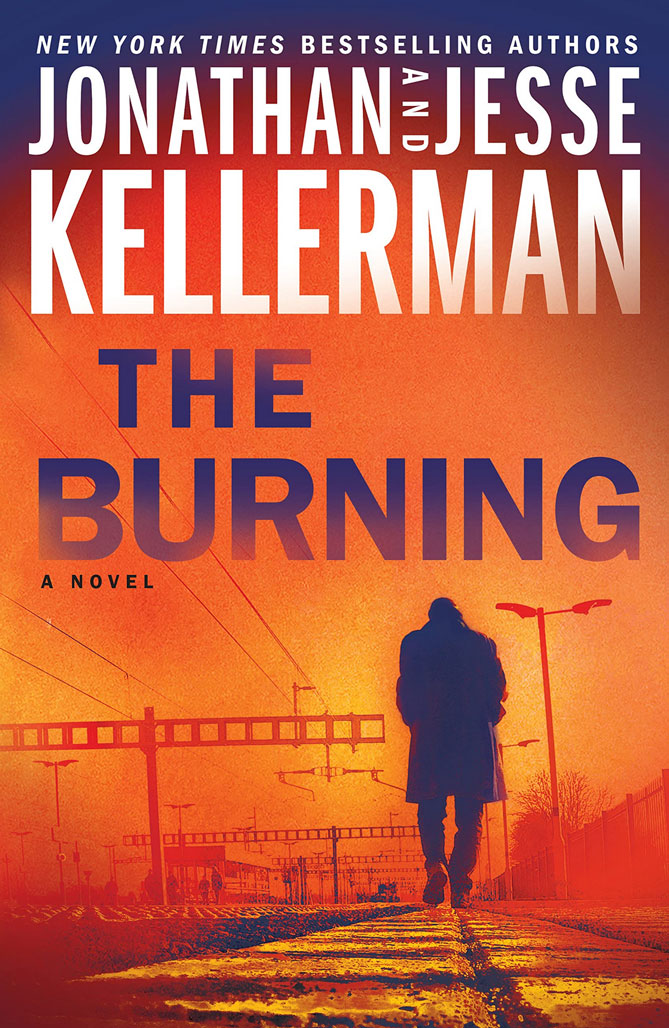Today’s Post by Joe Farace
While reading Jonathan Kellerman’s 1997 book, The Clinic,—a great read, by the way—I noticed a large number of windows and orphans in the first 30 pages or so. When it come to book design, orphans and widows are usually considered bad. First, let me provide a few definitions.
 Widow: A widow in typography occurs when the last line of a paragraph is not able to fit at the bottom of a page or column. Instead, it sits at the top of the next page, looking out of place.
Widow: A widow in typography occurs when the last line of a paragraph is not able to fit at the bottom of a page or column. Instead, it sits at the top of the next page, looking out of place. - Orphan: An orphan is the exact opposite of a widow. It’s when the first line of a paragraph sits at the bottom of a page by itself.
About Jonathan Kellerman
 I started reading his Alex Delaware novels sometime around 2010 when I discovered Evidence and then devoured every book by Kellerman the library had on its shelves. Later I started buying new Delaware novels as they were released.
I started reading his Alex Delaware novels sometime around 2010 when I discovered Evidence and then devoured every book by Kellerman the library had on its shelves. Later I started buying new Delaware novels as they were released.
I’ve found it interesting that, over time, his writing seems to have evolved. That includes both his writing style and the tone of subjects of his books. While he remains eminently readable, his novels have shifted from the darker side of his earlier books—as evidenced by The Clinic— to a much less grim look at the world of crime. There is one point in The Clinic where one sentence uttered by a character not only surprised me but left me speechless. That’s one reason that I would recommend that more sensitive readers stick to his newer novels. I’m not sure when this shift occurred or I’d let you know but my guess is this change was so gradual that I didn’t notice it until I read The Clinic, which reminded me that this was the tone of Kellerman’s earlier novels when I started reading them.
I can heartily recommend all of the four Edison Clay novels that Mr. Kellerman co-writes with his son Jesse. This includes books like The Burning, that follow the adventures of a deputy Coroner and take you into a world of law enforcement that few people even know exists. That’s part of why, I think, these books are fascinating reads. Every now and then—I may be wrong—I thought I could tell which part Jesse wrote and which that Jonathan wrote but I could be all wet on this.
Why Mystery Novels?
People often ask me about my fascination with mystery books, especially detective fiction. I’ve been a fan of mystery novels since I moved away from reading 50’s science fiction books that I enjoyed in high school and discovered Arthur Conan Doyle’s Sherlock Holmes novels and short stories. They made me into a life long Sherlockian and I continue to be a big fan today of both Doyle’s writings and movies based on them. So mysteries remain one of my favorite book genres. Don’t even get me started about my passion for the 87th Precinct novels written by the late Ed McBain aka Evan Hunter. Like Kellerman, McBain’s novels had a shift in tone over time but in McBain’s case they gradually got darker and darker but still remained fascinating reading. I think we’ll need to talk about his books in the future.
Trivia: When I lived in Baltimore and worked for the Great American Telephone Company, on my way to free street parking I walked past 203 North Amity St. That just happens to be the address of the Poe House and Museum that during the 1830s was the former home of Edgar Allan Poe. I think it was one of my high school English teachers that told me Poe’s The Gold Bug was the first ever mystery novel. Howard Haycraft, an American writer, editor, and publisher, disagrees and says, “Edgar Allan Poe wrote only three detective stories: “The Murders in the Rue Morgue,” “The Mystery of Marie Roget,” and “The Purloined Letter.” Maybe my teacher was trying to get us excited about reading The Gold Bug, but I can tell you I don’t remember not a single word of it even though I remain facilitated by the life and work of Edgar Allen Poe.
More Trivia: For what Charlie Brown and the Peanuts gang had to say about Edgar Allen Poe, click here.